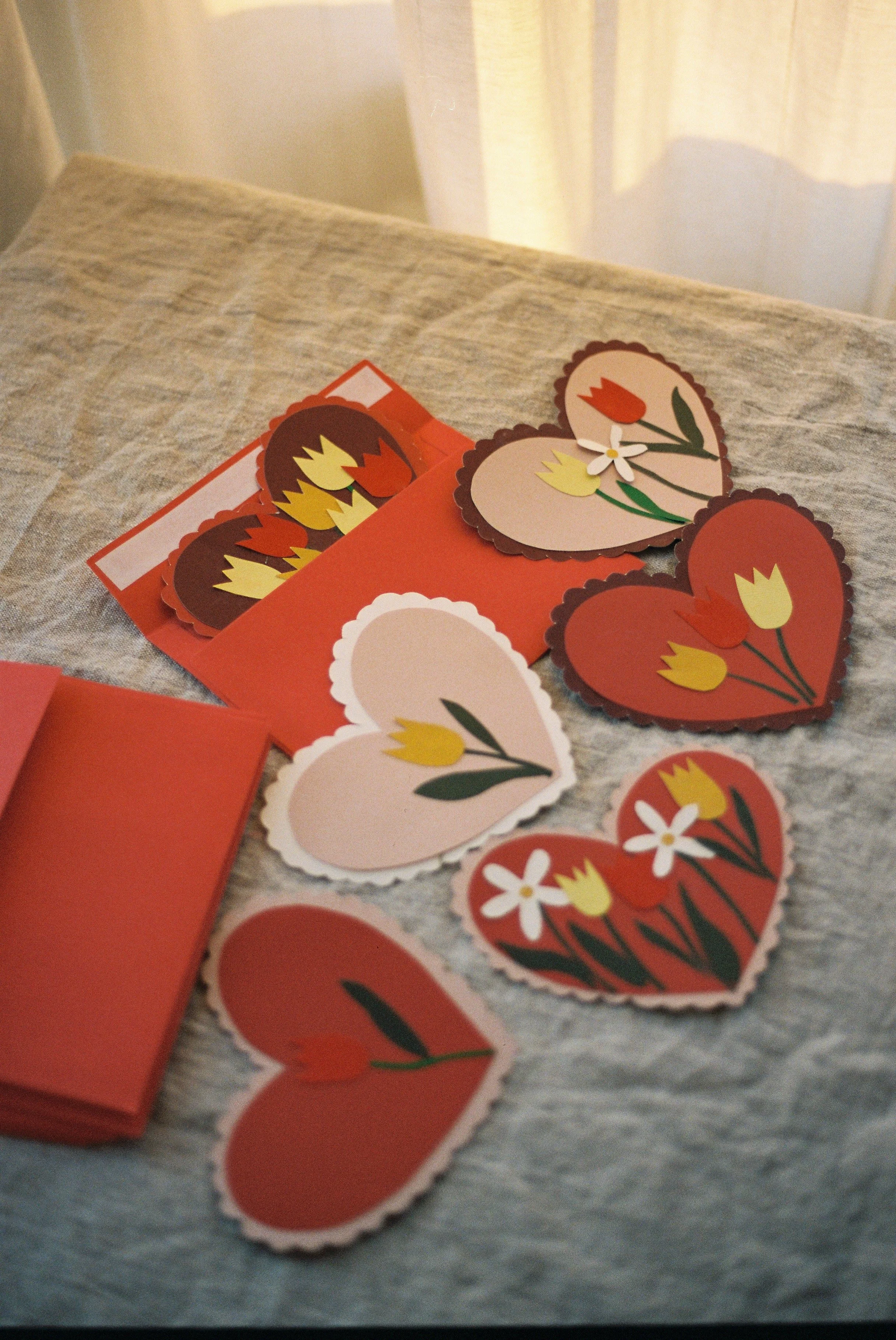
Celebrating with Red
LESSON 2
Children explore the meaning of red in Lunar New Year festivities and create red envelopes or valentines to wish loved one's good fortune.
The book "Lunar New Year" by Hannah Eliot.
Red paper, scissors and glue to make red envelopes or purchased envelopes.
Colored paper, stickers, crayons, markers to make valentines.
Scissors
Glue
Materials
Gather materials.
If purchasing envelopes, make sure to have them ready for the activity.
If making envelopes, familiarize yourself with this tutorial.
Prepare an area for making valentines.
Cut out hearts and flowers beforehand.
Preparations
Helps develop good reading comprehension by recalling facts and details from the story “Lunar New Year”.
Facilitate a discussion about times when they have experienced good fortune.
Guide conversations to help children connect how the color red symbolizes joy, love and fortune in Asian cultures.
Objectives for Teachers
Children practice recalling details from the story they read previously.
Children make connections with the color red in various cultures and traditions.
Children enhance fine motor skills through the creation of Valentines.
Children express their individual creativity as they engage in the creation of their valentines.
Objectives for Children

Collect and Connect
Practice saying the poem “Lunar New Year” together with the actions you came up with.
Lunar New Year
Dragons, lions,
Red and gold.
In with the New Year,
Out with the old.
Banner flying,
Bands playing,
Lions prancing,
Dragon's swaying.
Fireworks crackling,
Lanterns swinging,
People laughing,
Dancing, Singing.

Activity Flow
Start by talking about the last lesson and the story. Ask your child if they remember what scared the monster, highlighting the three things from the book: firecrackers, the color red, and bright lights. Then have them think about the colors connected to their favorite holidays like Christmas, Valentine's Day, Thanksgiving, or Fourth of July. Let them know that today, they'll be exploring why the color red is important in Lunar New Year celebrations.
Turn to the page in the book that lists the three things the monster fears, and highlight the importance of the color red, particularly during the Lunar New Year. Discuss how red symbolizes joy, love, and happiness in their culture:
Can you name holidays we celebrate where the color red is used?
How does the color red make you feel during those celebrations?
Can you remember where the color red was used in Lunar New Year celebrations?
How do you think children feel when they receive their red envelopes?
3. Read the part of the book about children receiving red envelopes with money during Lunar New Year. Explain that it's a joyful tradition to bring good fortune, meaning good, lucky, and happy events. Help children grasp the concept by sharing examples, like unexpected kindness or surprise gifts. Encourage reflection with open-ended questions such as, "Can you remember a time that made you feel happy?" or "Can you think of a moment when you felt lucky?" These moments can be described as good fortune.
4. Engage children in a creative activity where they craft valentines for their loved ones to wish them good fortune. Encourage them to use the color red, symbolizing good fortune in the Lunar New Year tradition. After creating valentines, guide them to either make a simple red envelope using a tutorial or use pre-purchased ones to store their valentines. Highlight the connection between the Lunar New Year tradition of red envelopes and the celebration of love during Valentine's Day in this special month.
5. Conclude the activity by discussing the children's creations. Facilitate a conversation about the significance of red in both Lunar New Year and Valentine's Day, and how these celebrations are a time to express love and good wishes. Ask open-ended questions such as:
How did you feel as you were creating your Valentines?
What do you hope your loved one feels when they receive their special valentine made by you?
What does the color red mean to you?




